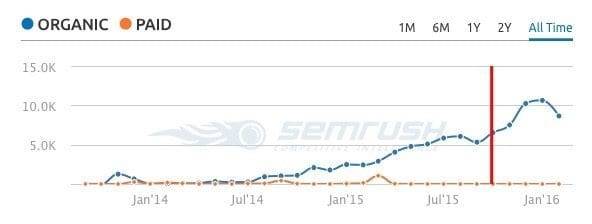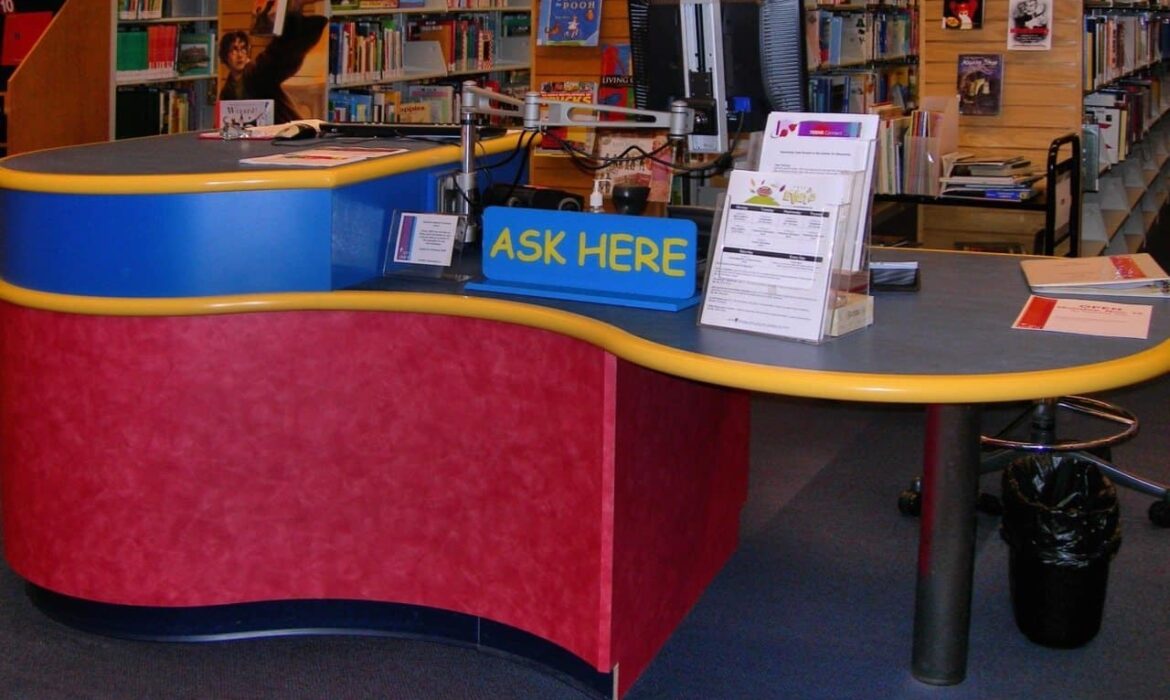Finding a balance between spamming and anonymity on social media
Finding a Balance Between Spamming and Anonymity on Social media
Finding that balance
Trying to decide what to post, what to say, and how often to do it can be a challenge. First of all, we all have apparent time constraints. We can’t spare the time to sit at our computer all day to find the most insightful article to re-post. It’s also unrealistic to be able to put a comment on every post that’s published by our network.
If we wait to find the perfect post to share, we’re unlikely to post anything. If we wait for creative juices to allow us to post a comment that will create AHA moments in our network, will we be busy with something else?
At the other end of the scale, posting can be completely automated or outsourced. It’s possible to create a website that’ll auto-populate with articles published by online press release sites. These sites welcome the sharing of their posts as attribution links are published too. The software can also be used to post these posts on social media automatically. If you wanted to, you could post every minute of every day all year round, automatically!
We can also hire social media managers who can pretend to be us, or part of our ‘press team’. They can spend all day long following/unfollowing, commenting and liking.
There are upsides and downsides to both of these extremes

Only posting when we’ve something insightful, original, and potentially industry-changing has the benefit of showing complete authenticity and brand integrity. The downside is that it’s unlikely that you’ll ever build much of a community on social media.
Posting too often can annoy people and cause them to unfollow you. Posting irrelevant content can get construed as spam. If this continues, then followers might also start to get a negative impression of your company. Auto-posting or having an outside social media manager comment for you might lead to postings that contradict your message, or even openly criticise a competitor. On the positive side, this is how social media accounts grow, regular posting leads to increasing likes, comments and shares, and an opportunity for your message to go viral. Some of these viral messages may be articles from different companies entirely. (Messages that are also suitable for your audience).
For most of us, the majority of things that we post on social media will be a compromise. Not every thought will be groundbreaking or even original. If you’ve a genuinely revolutionary original idea a few times in your lifetime, you could become very successful if you turn them into action.
The big questions are, what should we post, and how often should we do it?

The content of the posts, whether these consist of a company announcement from you or a re-posted article from someone else, should be potentially relevant and engaging.
Imagine that your company creates CAD software for drilling plans. If you decide that this is the only thing that you want to post about online, you’ll likely struggle. There’s not much on the subject to post or talk about on social media. You’re niche-ing down too much. Also, you’ll be ‘preaching to the converted’ too much if you’re only networking with the same types of people as you. Where will you find new customers?
There has to be an element of breadth in your postings. If you were to publish ‘get rich quick’ or ‘weight loss’ articles, then you’re probably spamming. If you ask yourself, what else might interest my target audience? Then you’re moving in the right direction.
If you want to find companies who might buy your CAD software, what else might interest the decision-makers?
- Industry certification and training companies.
- Industry-related societies and organizations.
- Developments in other types of tech and software that can help drilling efficiency.
- The economics of the industry as a whole (profitability and budgets).
There’ll be plenty of others that someone more familiar with this section of the industry can add, but these are examples. During an industry boom or crash, almost everyone will be interested in hiring trends and the price of oil. These are macro events that affect everyone.
Find uplifting, intelligently written articles about any topic that your audience might like to read. Over time your company will be associated with the emotions of positivity and helpfulness. When they’re in the market for what you have to offer, your company will come to mind.
If you only publish your company news when it happens, the press won’t get noticed if you only have 100 followers. This weak audience pool is in comparison to the 1000+ that you might gain in the same period by publishing a steady flow of relevant, positive and helpful posts.
On the question of how often to post, the vast majority of companies don’t post often enough to get noticed. There are a few reasons for this:
- Most people log onto social media infrequently; they miss the majority of posts in the feed.
- Most people scroll and scan through their news feed, and most posts get overlooked unless there’s a particularly catchy headline or image. The most insightful post in the world might not be identified as such by the average person scrolling.
- Social media companies have algorithms that limit the number of your followers having your post in their feed. Over time, most social media companies are reducing this percentage, and increasing the rate of advertising or ‘sponsored posts’.
The main reason why most people won’t see most of your posts most of the time is because of the nature of social media. Have you heard the list of news called a stream?
It is called a stream for a reason. It is because the posts float by towards the ocean of old news.
To only post a company update every few weeks and expect to get traction, is like the following example:
There’s a river that you love to walk alongside, nature and surroundings are so peaceful. The walk along the river becomes a romantic venture when one day you walk past the most captivating and physically stunning person. You find yourself thinking about them but don’t see them again. You decide that every two weeks, you will write a love letter and craft it into a paper boat. This boat is then lovingly launched upstream, in the hope that your future partner sees it in the flow, and decides to grab it and open it.
The best thing to do while waiting for oil price recovery
How well are you weathering the downturn?
Regular visitors will know that Out of the Box Innovations is dedicated to helping small to medium sized oil and gas companies with their marketing. This article also applies to people looking for work, during the current oil downturn individuals are finding a need to market themselves too.
During a crash, or a bust, like the one we are currently experiencing in the oil and gas industry, there’s a choice of options:
- Retire early/close your business.
- Batten down the hatches and stop spending money.
- Pivot your offering to fit the market. (For example, a business angel can become a bankruptcy adviser).
- Use the extra time and space to refine your business or personal value proposition.
You do have choices, though, which is always a great position to be in!

Here’s a picture of the Apollo 10 control room. Add a bit of colour and imagination, and they could be oil traders. These guys had little control over the situation, but you probably do.
In previous articles, we’ve covered some of the best things to do online to move towards the goal of online omnipresence. One of the most powerful ways of doing this is in the use of social media to network.
So, let’s say that your network is growing, and you’re interacting with influencers and decision-makers in your sector of the oil and gas business. That’s great.
You already know what you have to offer to other people or companies. Whether you’ve created the best valve or widget in the world, or you’re a talented multilateral engineer… You know what you’re capable of and the solution that you provide in the marketplace.
It’s not enough that YOU know what you can do
There’s a gulf, a canyon between what you can offer, and the new network that you’re building. You see, the people that you’re interacting with on Twitter or LinkedIn might think you’re smart, intelligent and helpful, but they don’t know exactly how you can help solve their problem in their business.
Perhaps you’re their next fracing consultant that they need to hire to help bring costs down. Or the next oil field services company who has created a fractional ownership model? One that helps E&P companies to keep costs down while retaining the benefits of having the equipment when they need it. (Did I just make up a business idea?)
How do your new business partners know? They might know what field you’re in, (and like you), but are they about to bring you onto their project?
The solution, the bridge between your knowledge, and them noticing you on social media, is solved by content creation!
Online content can mean blog posts, Podcasts, YouTube videos or anything that you can create and publish.
Creating content online will allow you to demonstrate your expertise to your next employer or create your next B2B deal. Each piece of content accumulates to become a ‘body of work’. Rather than just your helpful comments being spread through social media, your in-depth problem-solving articles can help people across the world.
You’re not an expert because you say you are, or even if someone else says you are. You or your company can demonstrate practical knowledge on a regular basis. When someone needs you, it’s likely that they’ll already know and trust you through your body of work. This means you won’t need to pitch or convince; they’ll come to you.
There’s a problem with creating content, though. Not everyone’s good at it. Not everyone has the time or patience to sit there in front of a blank screen and create something that’ll really demonstrate who they are and what they can do.
Is sky the limit? Or is your head just spinning at the thought of writing?
Here’s the content problem spelt out:
When you’re promoting yourself or your business online, there are a number of common problems faced by most people. Some are conceptual problems or issues related to a lack of understanding of websites and how the internet works. Other problems relate to skill sets being out of sync with what’s needed online.
(For simplicity, much of this article refers to companies and company owners looking for clients. The same techniques apply to individuals improving their online profiles for future employment and career growth).
If you want your website to appear higher in the search engine results, you can hire someone for that. If you want a new website, then contact a web designer.
The hardest problems to solve online are the ones where you need to combine your own experience, knowledge and expertise, with online skills. The best example that comes to mind is regarding content creation.
If you want blog posts or articles written, you can’t just call a writer and expect them to be able to write in your companies tone, in your industries jargon, in a way that’ll resonate with your customers.
So this is one of the biggest issues that a company owner faces when trying to get more traction online. There was a time where you could slap up a ten-page website and expect people to find you and be impressed. Now, in the age of infographics, Podcasts and YouTube, a flimsy site is a waste of time.
So, we all know that creating content is the way forward in order to create a body of work online, and get your message out to new customers. We know that with your industry knowledge and vision for your own companies future, you’re the best person to create these articles.
But you sit down, fire up the computer, open Word or Pages, and find yourself staring at a blank screen.
Suddenly you realise that you haven’t sat down and written academically for ten years? Twenty? Thirty? Your mind is blank.
In the bar at a conference you can talk for ages about what you do and how you do it, but to re-create this in written form seems alien. What do you do?
You know that even after you’ve written this post, you’ll need to write another, and another. What will you write about? How will you come up with new ideas? Ideas that people will want to read and will find interesting? Articles that attract customers – not repel them?
Content creation hacks
Fortunately, there are ‘hacks’ to enable the task of writing to become easier. I’ll share my favourite ones with you.
Take notes constantly
When you start to limber up and re-activate your creative muscle, you’ll start to find that ideas will pop into your head. These ideas are less likely to occur when you’re sat down ready to write an article from scratch, and more likely when taking a shower or driving your car.
When you get inspiration for a concept for a post, put pen to paper as soon as possible. Do it right away while creativity strikes, and while you can remember it. If you’re sat at your office desk then great, if you’re driving, you can pull over at the next convenient place and use a pen and paper. If you’re walking in the park and don’t have your pen and paper, then use your mobile phones note-taking application.
Write in stages
There’s no reason why you have to write the whole post in one sitting. In fact, until you get used to writing this will be very difficult. Just write until your creative juices stop flowing. It doesn’t matter whether you write ten words or 2000. Those ten words could form your companies new motto or slogan. Those 2000 words might get edited back to 500 gems.
After writing, you can file your work into different folders representing different stages of completion.
- There can be a folder for headlines, slogans, or themes.
- There can be a folder for short drafts of 3-500 words that might need to be fleshed out later.
- Then there’ll be a folder with complete articles ready for spell checking and editing again.
By taking notes constantly and then filing them in these folders, you’ll build up a production line and will never need to start from scratch again.
Re-purpose emails and Skype conversations
Some of our best growth opportunities in business come from customer feedback. An angry email might create a system change that stops you losing clients in the future. A positive idea from a colleague that inspires growth can be written about.
When I ever have a good Skype chat where the other person or I had a great idea or an ‘AHA!’ moment, I’ll cut and paste the thread into my Skype snippet folder which now has countless snippets. Sometimes an article is already halfway there.
An article written based on personal experience will always be more authentic and powerful than one that has been sourced and researched from other peoples work. This resonates with readers.
Don’t give up
Writing is like (almost) everything else in life; you get better with practice. So, if you decide that writing is beneficial for your business, keep going. You don’t need to publish anything unless it’s good enough and has been reviewed by a trusted friend or colleague.
It doesn’t matter how bad your work is in the beginning or how many errors are there. The learning curve will be fairly fast because the 20ish years of writing that you had to do during education is there at the back of your mind and will be dusted off. You’ll write better, and more easily over time.
Tag-team the task
It’s likely that there’s someone else in your company that can share the job of writing with you. Perhaps you’re great at expressing ideas, but your spelling, grammar and structure are bad. It could be that a co-worker or staff member is meticulous and very precise in how to structure a letter, article, journal or report. Pass the content back and forth and take turns to polish it until it is right. You’re likely to know when it’s good; it will be emotional.
Hopefully, this article has given you some good ideas, and you’ll go away and start writing. If you have any questions, please get in touch, either through the comments section below or through email or social media.
Also, If you don’t have anyone to edit, proofread or bounce ideas off, get in touch with me. Writing is a passion of mine, and I’m happy to help!
Fishing and Internet Marketing
Fishing and Internet Marketing
What has fishing got to do with internet marketing?
Progress happens when an old idea gets combined with an innovation or thought process. Sometimes two well-known ideas are married together to create something new, based on nothing new at all.
I love to go fishing. When I’m next to the lake or ocean, I feel the inner calm that people who meditate discuss. On the best days, this means a mental state where we can experience clarity, rejuvenation and an increase in energy levels all at the same time.
When explaining a concept to someone, analogies seem to work better than anything. If someone can file a new idea into a known segment of their mind, the process happens more quickly. Information related to a story or a familiar association results in a better memory uptake and recall.
Being immersed in nature is what it’s all about, not just the catching of fish. Online marketing is different though, it’s all about the result.
So, analogies are great.
So, in the name of progress, familiarity and innovation lets explore some fishing analogies to explain a couple of online marketing concepts.
If you like fishing or similar pursuits, this article might help you to understand something that can seem a little abstract. It’s written and presented to help expand your business through the use of the internet.
Success and failure

When you arrive at the water’s edge, you don’t know what the day will bring.
The best days involve lovely weather, plenty of fish and perhaps even a new friend. From the very first moment you wake up, you feel great, nothing goes wrong, and no equipment gets forgotten. All the traffic lights on the way to the venue are green. Your favourite fishing spot is vacant, and the picnic that your spouse provided is full of your favourite food. Even a loving note gets included!
On the worst fishing day of your life, you’ll catch nothing except a cold. Maybe your boat capsized. Perhaps your equipment ended up at the bottom of the lake. At which point, hailstones the size of marbles started raining down onto your face. The only positive side is that the red face looked like it got caused by cold, not anger, and the lake water hid your tears.
On some of the most epic fishing days, we experience a mixture of joy and pain.
Both of these analogies apply to business, and online, it’s no different. What you do next in your online efforts might result in a roaring success or a miserable failure. Just as in any business, failures outweigh successes, which make the successes much sweeter.
The best place to fish and the best bait to use.

So, if you’re an experienced angler, you’ll have an idea of the best baits that are likely to work for different species of fish. If you’re a regular to a particular fishing venue, then you’ll be aware of ‘hotspots’ and other areas that are a waste of time. In your online business, you’re likely to know what ‘bait’ appeals to your offline customers. You’ll also have an idea of which ‘spots’ online you are likely to get a bite.
But you don’t know for sure until you try. Even the best bait put in the perfect spot can result in the terrible days fishing that was mentioned in the ‘worst day ever’ example. Also, if we only fish in the places that have historically been good, and use previously successful bait, how do you break new ground?
More importantly, how do you get ahead of the competition? Those who are also experienced and aware of the effective baits and fishing spots?
The very best fishermen spend most of their time exploring their tried and tested baits, tackle, techniques and tactics. They also spend time in experimentation. They might use utterly different bait, in a new spot, for short periods, to discover a new hotspot or effective bait.
If you have a successful offline business, this is how you approach internet marketing. You try different tactics in different places. You approach with an open mind and a spirit of adventure.
Competition and saturation

So, this point links to the previous one about experienced anglers knowing the best spots to fish and the best bait to use. On every fishing lake, the following situation plays itself out.
Someone has a fantastic day where they catch a ton of fish in the corner, using meat paste as bait. This person tells his best friend about the winning combination and asks him to keep it to himself. Fast forward six months and the majority of people are using meat paste, and are casting to any part of the lake that looks remotely like a corner. None of these people catches much at all.
All the latest action gets enjoyed by the guy in the original success story. Now he is casting right to the middle of the lake, where the fish feel safe. He’s also using bread as bait, something which no-one has used for years. How did he know that this would work? Because he used the testing technique previously described. Even on his best days, he tests new tackle, bait and fishing spots.
The analogy here is clear. Success stories online spawn many copycats that push up advertising costs or make it hard to rank in the search engines. The best online marketers are always testing and trying new things.
One of the interesting things about marketing on the internet is that once you’ve found a new spot to try, your bait can be left there for months or even years. A blog post on LinkedIn Pulse, or a directory listing can stay there potentially re-directing visitors to you. The ‘bait’ never gets old, and you never have to pack it up and take it home.
See the internet like a fishing net
The word ‘internet’ is very accurate and descriptive. The net part doesn’t need explaining, and we know what a net is. We know roughly how it’s constructed and how we use it. The ‘inter’ part can get seen as interaction. What is the precise meaning of inter?
What the dictionary has to say:
inter- 1. a prefix occurring in loanwords from Latin, where it meant “between,” “among,” “in the midst of,” “mutually,” “reciprocally,” “together,” “during” (intercept; interest)
Excellent, there are some great words here. So, we have a net that has features of reciprocality or togetherness.
These words describe the best attributes of the internet, the connectivity and mutual benefit that can be derived.
Back to the fishing analogy.
We can see each thread of woven nylon as a strand of your online effort. One strand is your LinkedIn account, one is your home website, and another is the forum membership. Each join of the net is a new bond that you make with a new follower or associate.
A single website or a single strand of net won’t catch you anything. But as your network grows more extensive, with more online mentions, pages and links, so does the effectiveness of your net.
What is the best, most effective net? It is strong enough and big enough to land the fish, or customer of a lifetime.
Having Trouble Grasping some of the Concepts of Online Marketing?
Having Trouble Grasping some of the Concepts of Online Marketing?
Information overload
Sometimes clients have problems grasping all of the aspects of online marketing. This challenge is, of course, only natural. Any new in-depth topic is hard to understand in the beginning. If an internet marketer decided to take a look at structural engineering or corporate accounting, they’d get lost in the beginning. (Actually, they’re likely to be lost for a few months or even years).
A decision needs to get made as to how deeply you want to learn. When we go to the doctor, it’s good when they can explain a problem in simple terms, and this helps us feel comfortable. To have full knowledge of the doctors thought processes and experience might take at least a medical degree, and possibly many years of experience as well.
When developing your online omnipresence it helps to fully understand the basics and the result that you want to achieve. You don’t need to know every aspect of the digital world. This mastery will take years that you don’t have available.
So in the vein of knowing the basics, and what you want to achieve, let’s break it down.
Marketing and advertising have changed since the old days.
Internet marketing 101

Q) What’s the internet?
A) A network of digitally displayed information with links to even more information.
Q) What’s marketing?
A) A set of tactics to achieve the goal of putting your companies offers in front of more potential customers.
Q) How’s that different to sales?
A) Sales are one on one, one to a group, or a group to a group. Marketing is sales but in a volume model.
So, internet marketing is about getting your sales message or value proposition out. You want it in front of as many relevant eyeballs as possible. Excellent internet marketing makes sure that most of these eyeballs belong to your target customers.
Public relations/ advertising 101

Q) What do we want to achieve with PR or advertising?
A) We want messages about our values and market positioning in front of as many people as possible.
If we can make these messages appear in front of people who might do business with us, then this is called targeting.
Q) What is the difference between internet marketing and marketing in the real world?
A) Nothing, the internet IS real, the people looking at your website or advert are real as well.
Where do we want our message to appear? Everywhere! Or at least in as many places as possible. If these places are where your target customer hangs out, then this is perfect.
Let’s draw a comparison to traditional PR or advertising. If you came up with a remarkable product and a buzz started to occur, how many news channels would you want it to appear?
… 1?
… 20?
… All of them?
… All news channels all over the World?
Unless you’re as amazing as Apple, global domination is unlikely. So you start with as many channels as possible and try to target them.
If you created a billboard advert, where will you want it to display?
… In your local city?
… In every city?
There are too many news channels, and too many cities to make global domination viable or cost-effective for most businesses. This challenge means that you pick the most relevant to your niche. You choose places where your target audience is most likely to see them and take action.
Finding customers or them finding you. Push/Pull
Just as with traditional marketing, in the online space you can create ways for your customers to find you, or you can go to them.
For example, imagine that you create a helpful infographic about geology. It helps a geology student visualise a typical cross-section of the earth that shows the likely rock formations that contain hydrocarbon deposits. You might help them pass their exams. If when they visit your website, they also see that there are other valuable resources, and a mailing list- they might sign up. Someone like this will keep being ‘pulled’ back to your website because it is so helpful to them.
Over time, geology professors might link to your helpful information from their blog, or from their university resource page. They’d do that to allow their students to find it, and your SEO backlink profile will become more powerful. Your geological formation infographic will feature high in the search results, pulling more visitors to your website.
An example of push advertising is paying for a Facebook adverts or Twitter adverts that appear right in their stream next to the updates from their trusted friends and colleagues. They see your message in a trusted place.
Just as in the ‘real world’ of newspapers, leaflets and magazines, online there are better places to put your message. (Most places would be a waste of time, due to targetting). Due to the inter-connectivity of ‘the web’ online efforts can be continued on a steady basis, the results will be cumulative.
The goal would be to have mentions, write-ups or links on every news site, every industry site, every related blog. You’ll never be able to appear on them all. If every month you create or find a few new places to put your message, you’ll build momentum.
The Case for Persistence in Your Online Efforts
The Case for Persistence in Your Online Efforts
Keep going
(Even if you aren’t getting much traction).
When you create your company website or social media pages, you’re likely to be excited at the prospect of a new flow of customers. Every industry will have its examples of start-up websites that have built up substantial traffic numbers and social followings.
In the oil and gas business, we see examples such as my favourite oil and gas industry website, Oilpro.com.
NOTE: Oilpro has since closed down for legal reasons. This was an early OOTBI blog post, and the overall message is still valid. See our ‘Goodbye Oilpro’ post here.
Here’s a graph showing a substantial increase in search visibility:

It comes from an SEO monitoring tool that I use all the time, Semrush.
Imagine that this is your website, the period from late 2013 to July 2014 might have been harsh. Around December 2013 it might have seemed like you were going backwards! But then growth roughly triples/quadruples in the last 12 months as the site takes off.
This companies website has plenty of visitors with an established audience. How do we get to this stage? Where can a new post get 10,000 views or 100 comments?
The problem is that when a website is new, it doesn’t have the necessary authority signals for the search engines to rank new content high enough for people to see it. New social media pages don’t have enough potential eyeballs on them for the viral process to take place. There needs to be a ‘critical mass’ of authority and viewers for the rich rewards to come.
Here’s the challenge:
So, between the brand new stage, and the viral stage, there’s a gulf, a wilderness, a no-mans-land of fear and anxiety. The concern is that your work will never pay off, and you’re merely wasting time and money.
Unfortunately, some of your online efforts won’t work out. We test and scale what works and abandon what doesn’t. As we progress, we develop knowledge of how our business proposition works in an online venue. We learn lessons along the way.

The majority of intrepid internet explorers get lost in this wilderness and efforts stall. The potential rewards are enormous; the mechanism for this to happen is evident to all. But how do we get through the wilderness of fear and uncertainty?
Here are a few points to consider, to help you stay focused and on track.
Sometimes it’ll feel like we’re not getting anywhere because 99% of people who see something or read something don’t take any action at all.
When you’re surfing the web, how often do you comment on a blog? How often do you see something that you enjoy on Facebook, but don’t even click the ‘like’ button? Remember that the majority of people who notice and appreciate your message won’t let you know about it.
It could be that in one or two years, a regular reader of your updates will need your product or service and will come to you. The time will be right for them. They’ll be a stranger to you, but they’ll feel like they know you already because you’ve appeared in their social media stream alongside their friends and colleagues.
Even those people who see your tweets, but don’t click on them will keep seeing your brand name, alongside a sensible comment and relevant content.
Every update, blog post, and share will help you chip away at the task of creating a brand. This process is similar to traditional advertising billboards and TV adverts. Most of them don’t have a ‘special offer’ or a telephone number to ‘call now’. Many are put off by this; these types of overt sales commercials tend to appear on tacky shopping channels.
Advertisers have realised the benefits of regular brand messages for a long time. Nowadays a commuter sat in a taxi will be likely to be looking at their smartphone, not outside at billboards.
The way that the search engines work involve an algorithm scoring system.
Googles algorithm is reported to have 200+ ranking factors. It’s prevalent for websites to ‘pop’ and take a big leap higher in the ranking. Quite often, a more established site starts ranking for hundreds of related search terms all at the same time.
To make an analogy, we all know how credit scores work. You’ll get points for how many years you’ve lived at the same address, and how many years that you’ve been with the same bank. Your score will be affected by whether you have any default records or court judgements against you for non-payment of debts and so on. All these factors add up to a score.
When you’re 16 years old, and at school, you can’t get credit. When you start work, you should be able to get a credit card and a small overdraft. After a couple of years of handling your finances well, the chances are your credit rating will ‘pop’ and you’ll be able to get a car loan and a mortgage.
This process is similar to search engine algorithms. Progress can be slow for six months to a year, possibly more. If you keep committed to your goal, at some point, your website will get established enough that Google will ‘trust’ the content that you have posted there.
Almost all of what you are doing online will have a benefit for years to come.
The editorial links that you’ve earned through doing good business will continue to link to your site and send referrals. The charts, research papers or instructional videos will get found by people that see them as helpful. That could include the next generation of clients or peers for your particular industry sub-niche.
Remember that the next generations will be far more tech-savvy. If you want your business to grow, you need to embrace future trends, even if some of them seem alien or even incomprehensible to you right now.
Common Questions From New Clients
Common Questions From New Clients
I’m always happy to answer your questions. It’s likely that If you have a question, others will too. You can ask questions however and wherever you want to.
One of the reasons why I’ve connected my social media accounts to this company website is so that you can approach me directly. Another reason is so that people can find me and communicate according to their preferences. So, feel free to ask questions at the bottom of this page, or through Email, Linkedin, or Twitter.
From time to time, I use Q&As as a basis for articles so that that future clients can benefit. This publishing also saves repetition for the more common questions.

Our typical client and visitor is a seasoned expert in the oil and gas industry. They’re either an owner of an SME in their specialist area, or are responsible for advertising or the company website. While they’re very knowledgeable about their core business, with online marketing, they are at ‘learner’ status. They are keen to learn and ask many questions.
Some questions seem to come up more than others, so here are eight items that keep coming up again and again:
1) What type of SEO support do you provide?
Out of the Box Innovations isn’t solely an SEO company. Since it’s so essential to every website, we spend as much time on SEO as anything else.
We advise on SEO strategy and provide services such as on-site optimisation, keyword research, competitor research, link-building campaigns, and content marketing.
Almost all of our previous clients are oil and gas or alternative energy related. We’re working on projects that facilitate a higher level of interaction and support between our friends and clients in the business.
The mutually advantageous structure of having a group of oil and gas companies joining together and cross-promoting each other has healthy SEO benefits in itself.
The increase in citations and URL hyperlinks will have benefits, but a primary objective is to raise awareness of each other’s companies. We join forces with companies with complementary services and products and then help each other with cross-promotion. If you do require a full SEO service, we’re confident that there’s no one more experienced in our vertical.
2) What are backlinks? What are the benefits of having them?
Backlinks are URL hyperlinks. For clarity, switch the words around. Call them ‘Links back’ because they’re a link back to somewhere else on the web.
Here are a couple of backlinks leading to articles discussing backlinks!
https://moz.com/beginners-guide-to-seo/growing-popularity-and-links
https://respona.com/blog/seo-strategy/
Backlinks go wherever we deem them appropriate. They’re usually used to quote a source, or provide an explanation to something that would be too wordy to explain in the context of the existing article. We link back to offer evidence, examples, credit and sources for what we’re saying.
Some of the benefits of backlinks are as follows:
- We can cite a source; so that if the reader thinks we’re wrong, they can take it up with the original writer.
- We can help educate our readers without having to explain every single technical point during the body of the text.
- We can link to others as a recommendation and ‘hat tip’ to the work that they’ve done.
- We can link to other work that we’ve done, to keep the reader engaged in our message, rather than moving on to another person’s website.

The main benefit for SEO purposes is related to the way that the search engines place different pages in the search results. Google pioneered the use of backlinks as a quality signal in their algorithm.
They effectively count links as ‘votes’ for a particular page on the web. Of all the different components to a search result, this is the most significant factor in the placings. There are more than 200 various factors in Google’s algorithm, all with different weighting.
If there are two very similar and helpful articles on the same topic, the one with the more powerful link profile will show higher in the search result. (If all other 199+ factors are equal).
An interesting part of the way that Google counts these ‘votes’ is that they’re not all equal in weight. Unlike in a democracy where a circus clown’s votes count as much as an Astrophysicist, Google would weigh these votes. So, a backlink from a government or educational authority might be worth three from a mainstream news website. A typical news website might have more power than a quality brand. The quality brand might have 50x more link power than a brand new site. (These numbers are for example only, Google’s actual algorithm is a secret).
3) We already do our SEO and social media – How will it benefit us as a company if we work with you?
If you’re already doing these things, then you’ll understand the benefits. You’ll also know that there’s no ‘finish line’.
Just like an arms race, all competitors keep going to become stronger and more powerful and influential. If you see benefits, then you’ll want more of the same. If you haven’t seen benefits, then it might be that your competitors are too far ahead still and that you need to do more.
Each niche is different, some have very little competition, and some have a lot, some companies will get more benefits than others. We can look at each company on a case-by-case basis to assess the potential benefit.
4) Does social media activity influence SEO?
Social activity is one of Google’s ingredients to their algorithm as a quality signal. In combination with other SEO tactics, social media will help. But it’s not cost-effective to focus on social media for this reason. Social media signals are weak from an SEO point of view. Social media is for networking and getting in front of target customers at the place where they spend time online.
5) How do you assist in building our social media presence?

Just as with the answer regarding the SEO work, the social media help that we provide will either be primary, or strategic.
Please bear in mind that more prominent social media management and SEO companies often charge companies thousands, or even tens of thousands of pounds/dollars every month.
The main benefit in dealing with Out of the Box Innovations is in our knowledge of the oil and energy industry, and the established community-related cross-promotion. Our deep industry experience helps with the primary purpose of promotion and collaboration.
6) I understand what you’re trying to do, but as more companies join you as clients, will it not become more difficult for my company to stand out??
At present, all of the oil and gas companies that we’re advising are small to medium-sized entities that are non-competing. If there were 100 recruiters, 100 trainers, and 100 valve manufacturers, then some benefits might be diluted. If someone asked us for a personal recommendation, it might be hard to choose. Other benefits, such as interacting on social media and cross-promotion, would be amplified.
If everyone worked on their online presence at the same time and the same rate, their internet exposure would stay the same. In reality, though, new companies are embracing the full benefits of the internet all the time. We could ask what if your competitors were all there and you aren’t?
7) How will I know if I’m receiving a good ROI?
In advance, no one knows how much benefit will be attained by expanding their online presence. It’s why we recommend a smaller work scope and a low price point for initial work. After improvements have been made, and plans are progressing, visitor referrals can get tracked, and numbers evaluated.
It’s also likely that you’ll find out how customers found you because some will tell you. Others will send messages through social media or will email directly through the contact form on your website. Perhaps the question of ROI will be more relevant after a few months when you decide whether to increase your efforts.
8) If you assist with SEO for our company, will our company appear higher up on the search engine rankings??
It depends on how competitive your niche is. If you’re in a more competitive space, you won’t suddenly overtake the larger companies. Some got established over time, and others spend thousands every single month on SEO or social media management.
In smaller niches, then ten backlinks might cause an excellent movement. A benefit of expanding your online presence is for collaboration and cross-promotion, not just to appear higher in the search engines.
Another point to remember is that when starting online, you won’t know where the big wins will be, and what will be less effective. First, you get the basics up to date, and then there’s a process of outreach, promotion, content creation and syndication. We can test and scale, and we double down on winning strategies and shelve less productive techniques. We keep doing this until we find a long-term strategy that suits your business and your customers.
How do you advertise in a downturn?
Expanding while you’re contracting
During good times, business often seems to happen like clockwork. If your offering is market worthy and well-priced, as long as you’ve some smart marketing in place, you’re going to be busy. Unless you make some huge mistakes, you’ll find that customers or clients come back for more, and refer others.
Often business owners see there’s plenty of profit available for advertising, but wonder whether they should bother? Why spend money when you’re too busy to handle extra work?
Then, the crash comes. Sometimes it is a credit crunch, and sometimes it’s foreign competition. Right now, many of our clients and contacts in the oil and gas industry are struggling to make sense of the prolonged drop in oil prices. Whatever the reason for the downturn, profits drain quicker than you can imagine, you think that one bad month could be an anomaly, suddenly it’s twelve.
Now you’re faced with a dilemma, do you advertise at a time when you can least afford it? Do you invest in new products, services or technology?
How can you put an expansion plan in place when you don’t know what the future holds?
Picking yourself back up and reversing the downtrend
If you’re not ready to close your business, there’s a solution that doesn’t involve much investment. One that can help you turn around much quicker while having a stronger foundation.
The purpose of advertising is to create brand awareness, as well and attracting customers and making deals. For an extended period, ‘traditional’ advertising was the only choice (TV, newspaper, radio and so on).
Traditional channels have gradually become less effective in the last 15 years or so. 20+ years ago large companies spent a lot of money on TV, billboard, newspaper and other types of advertising. While they hoped for the phone to ring as a direct result, they also wanted to create brand recognition.
There was a phase where banner ads on websites did very well. Over time, all blatant advertising has become less effective. Now, even website banner and click ads are becoming less profitable.
The objective of building brand awareness, and getting the phone to ring can be done now for free, by smart use of the internet tools we have available.
Most buyers are overwhelmed with sales and marketing messages to the extent that they are becoming ‘ad-blind’. Many people now block adverts in their browsers or watch TV channels that don’t have adverts. One reason why people like ‘on-demand’ TV is that there are no ‘annoying adverts’.
What’s taking over from interruption type advertising is providing trust-building messages regularly. The internet allows us to reach out to thought leaders, influencers, and company decision-makers in a way that’s difficult to achieve in person.
During a downturn, you’re more likely to get peoples attention than during good times, because these people are looking for suggestions and answers to their problems. Whether traditional advertising is the best way to do this is questionable and niche specific.
Fortunately, through online avenues, you can achieve the same business goals, for a fraction of the price.
If you’ve staff that are less busy because of the downturn, encourage them to share your companies message. They can do this on LinkedIn, Facebook, Twitter and in online groups.
They can do it by commenting on industry-related forums and even on competitors blogs! Steal their audience from right under their noses! Every single employee can become brand ambassadors in the way that they conduct themselves online.
You’ll save money, and possibly get a better message out into the marketplace. If you approach online networking from an angle of understanding your customers, and caring about the result that they’ll achieve, the message will be more powerful than a ‘special offer’.
Posting to a Company Page on Social Media: The 2 Most Important Things to Remember
Posting to a Company Page on Social Media: The 2 Most Important Things to Remember
Switch into ‘company mode’ when you go from your account!
When you post to your private social media accounts, you’re already in tune with your target audience. You know that Aunt Millie will be offended if you swear and that your sexist jokes will rile your sister. Your racist jokes that might seem hilarious down the local pub will undoubtedly hurt a number of your connections.
So, what do you do? You either instinctively know what’s appropriate, and work your page as if you were everyone’s best friend. (Which you are!…)
… Or you post what you want, including strongly worded political and religious opinions as well as jokes that might be inappropriate for parts of your network. The people who do this kind of thing often think that “if they don’t like it, then it’s their problem”. Over time, people who don’t like it will unfriend, unfollow or mute your ramblings.
When you are posting to a company page, then you’re speaking as the ‘Company Spokesperson’ or the ‘Press Team’. Some practices need to get followed — not my rules, or even your companies, but rules of sensible advertising and streamlined communication.
NOT the next customer that you secured through Social Media!

1)Don’t speak as yourself unless you identify yourself.
So, if you’ve been at the company for ten years, play golf on a Wednesday, and hate Vegetarians, this is not something to put on a company update bearing the company logo. What kind of professional company would do this?
See every social media update as a mini-press release that’s being posted by the Press Team. If you want to offer any strong opinions that might cause offence or controversy, post them to your page. Then you can confer with colleagues before deciding whether this message is suitable for the company. If it’s appropriate, then your post can be shared by the company page. Then a reader can see who’s expressing the opinion.
2) Don’t be negative.
If you’re part of a company, you’re likely to be trying to sell goods, services or consulting. People don’t buy things when they’re irritated, angry, bored or upset. There’ll be exceptions, of course, such as the socialite ‘retail therapy’ when a wealthy woman might go and buy some expensive shoes. Even then, she’ll not purchase the shoes from a store that’s responsible for her negative emotions.
If a customer wants to complain about how terrible the industry is, how inefficient your sector is in comparison to another, then let them. The customer’s always right. But this cannot be your companies (mini) press release. Can you imagine a company advertising campaign based on negativity? Can you imagine a company spokesperson announcing that they feel frustrated, that competitors are better, or that things are going to get worse?
It’s unthinkable. So every update needs to be positive. This positivity doesn’t mean that you blather on about everything being great when it’s not. Don’t be tempted to put a positive spin on something terrible because you’ll come across as insensitive.
As my Mother (and perhaps your Mother) always said, “if you can’t say anything nice, then don’t say anything at all”.
Change ‘nice’ for positive/constructive. This way, even the most terrible news can involve a productive solution or effort to minimise damage or help you re-build more quickly.
So, to recap, when posting to your company profile social media:
- Think of every update on social media as a mini-press release.
- Don’t speak as yourself on a company page; imagine that you’re the Company Spokesperson.
- Never say anything negative or anger-inducing under any circumstances.









